We Drove the Ultra-Base, Manual Ford Ranger the U.S. Doesn't Get. Should Americans Be Jealous?
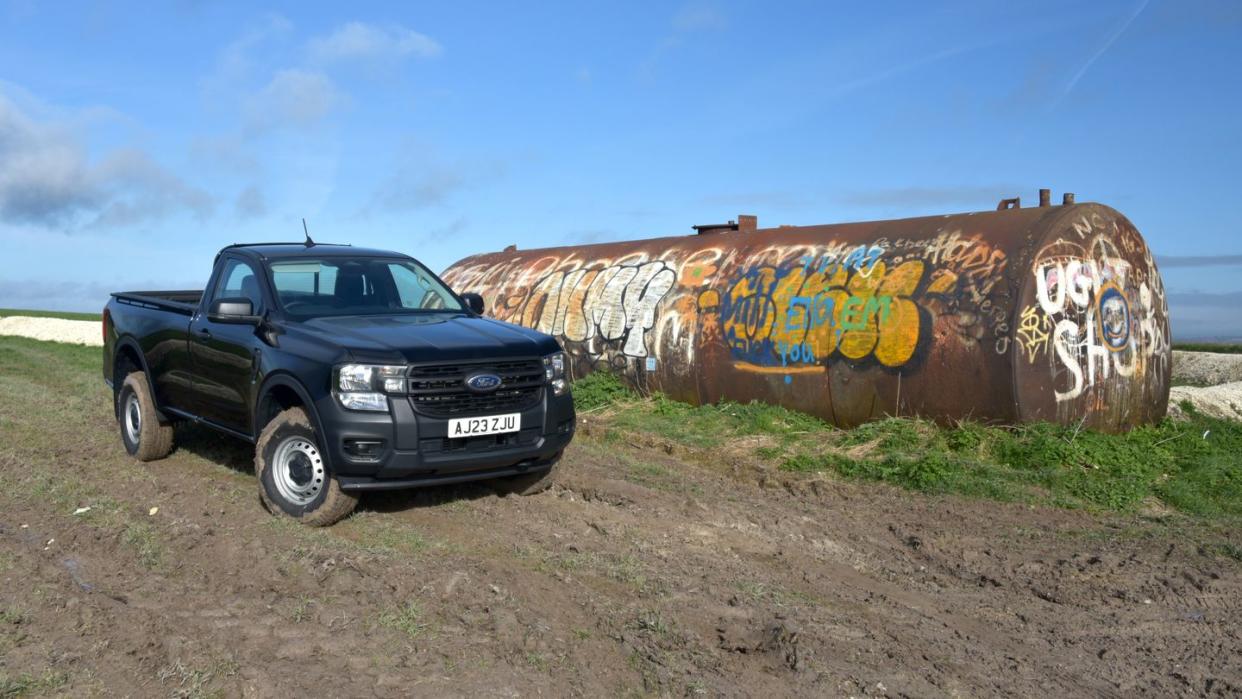
Ford tried hard to create the world car, one it would be able to sell in all major global markets. It did this variously over the decades with Escort, Focus, Contour/Mondeo, and even the dinky Fiesta. But none really worked, as the company repeatedly discovered that different international regions have different tastes. Now that Ford has all but given up on conventional passenger cars, apart from the Mustang, the idea seems to have died forever.
No matter, because instead, the company has succeeded in creating a world truck in the current Ford Ranger pickup. Previously there were substantially different Rangers for different markets, the branding often shared with unrelated models, but for the T6 generation, launched in 2011 and reaching the U.S. in 2019, these differences were all but eliminated. The same basic pickup was sold almost everywhere. The Ranger is now built in Argentina, South Africa, Thailand, and the U.S., and is sold in nearly 130 countries worldwide. It's more than any other current Ford vehicle.
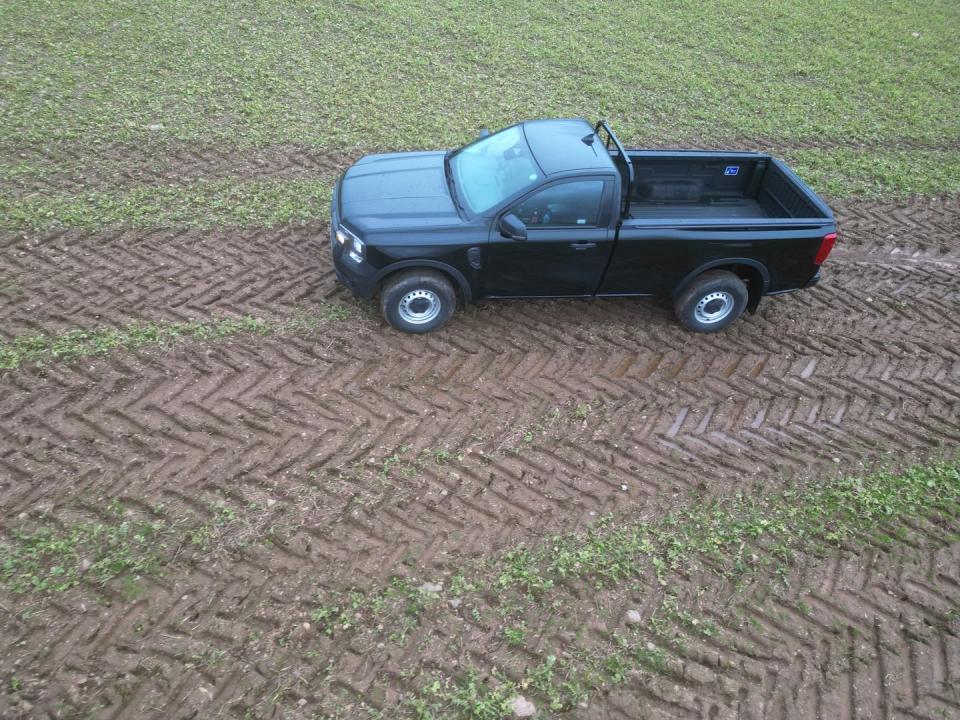
Our first impressions of the new, T6.2 Michigan-built Ranger were overwhelmingly positive - from the basic 2.3-liter four-cylinder Ecoboost to the 3.0-liter turbo V-6 powered Ranger Raptor. But it is frustrating that America is going to be denied a genuine ‘work truck’ spec, even though these are still offered in other parts of the world. All U.S. Rangers, from the base XL upwards, come in four-door double-cab configuration and get an automatic gearbox as standard. Also painted bumpers and alloy wheels. Yet in Europe, the most basic configuration is an old-fashioned stripper that wears the familiar marks of automotive poverty unpainted gray bumpers and steel wheels. It also comes with a single cab, a manual gearbox, and a turbodiesel four-cylinder engine. Should America be jealous?
My quest to experience the entry-level Ranger turned out to be a challenge. Britain’s base spec does seem to be the lowest of any major market; after looking at lots of Ranger configuration pages the U.K. seems the only place in the world where aircon isn’t standard. Bad news came when I asked to drive one, Ford of Britain said that as the single-cab XL manual makes up less than one percent of Ranger sales in Blighty, the company doesn’t have a demonstrator. So I begged a little harder—I like base trucks and I cannot lie—until Ford managed to find one from another fleet. I’m glad they did, as even shorn of almost every luxury the Ranger still feels special.
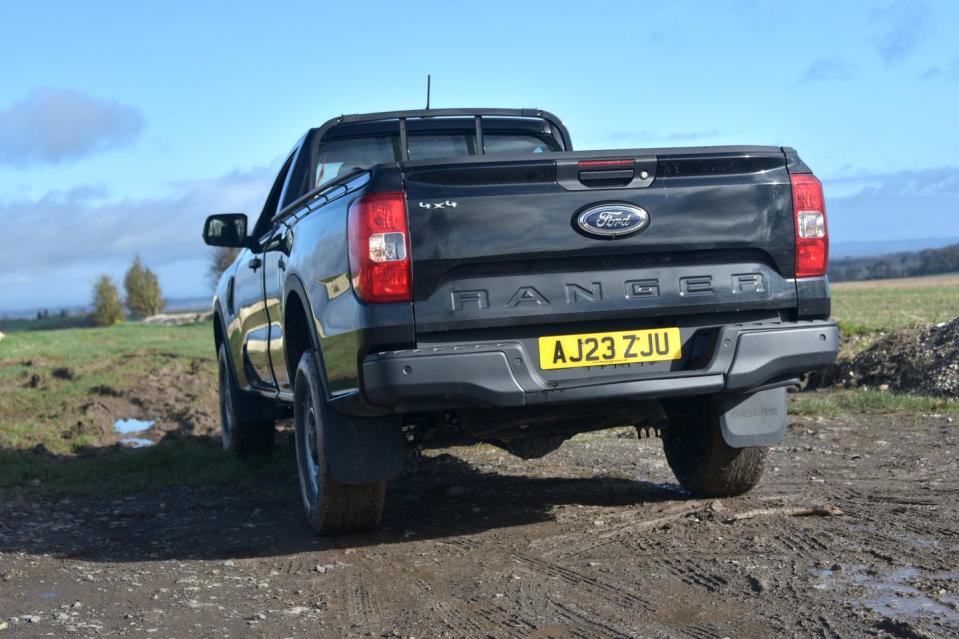
Base means different things in different parts of the world, with the first surprise being the list of extras that even the cheapest Euro-spec Ranger gets as standard. Having to meet the requirements of the European Union’s recently introduced Vehicle General Safety Regulation means it has automatic emergency braking, active lane departure warning with steering input, and speed limit detection. With all the necessary sensors on board, Ford also gives every European Ranger distance-keeping radar cruise control, a feature reserved for luxury cars even a decade ago. Euro safety rules also dictate both rear parking sensors and a reversing camera.
All European Rangers also ship with selectable four-wheel drive with a low-range transfer case. As in the ‘States, it also gets a standard 10.1-inch dashboard touchscreen that can run both Apple CarPlay and Android Auto. Digital instruments are also standard, as here, although the XL gets a small 8-inch display flanked by fuel and temperature gauges that use illuminated light bars, these reminiscent of the LED dash of the mid-‘eighties Pontiac Fiero.
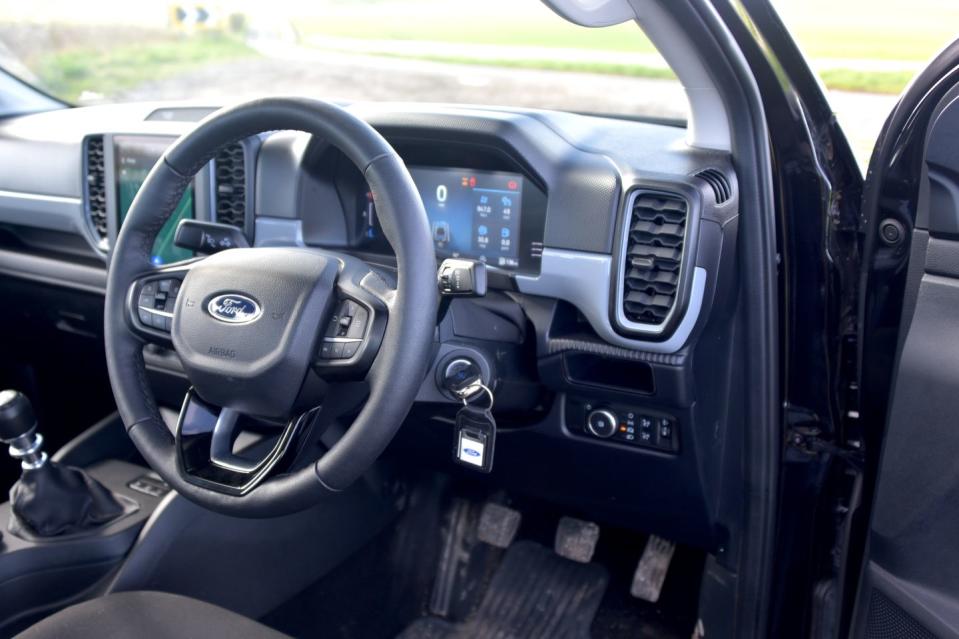
But in other areas, the European Ranger XL remains Spartan in its disdain for fripperies. Front and rear bumpers are unpainted, as are the wheel-arch protectors that sit above the 16-inch steel rims, also side mirrors caps and door handles. The bodywork carries no decorative trim at all, the headlights lack the DRL strips of plusher Rangers, bumpers are thin moldings and even the vents in the front fenders are blanks.
Inside the Ranger’s cabin are workaday dark cloth seats, with entertainment coming from a two-speaker audio system. Space isn’t bad, although pushing the seat all the way back obviously reduces the ability to recline the backrest. And while the rear bed provides most loadspace, there is room to put smaller and squashier bags behind the seats.
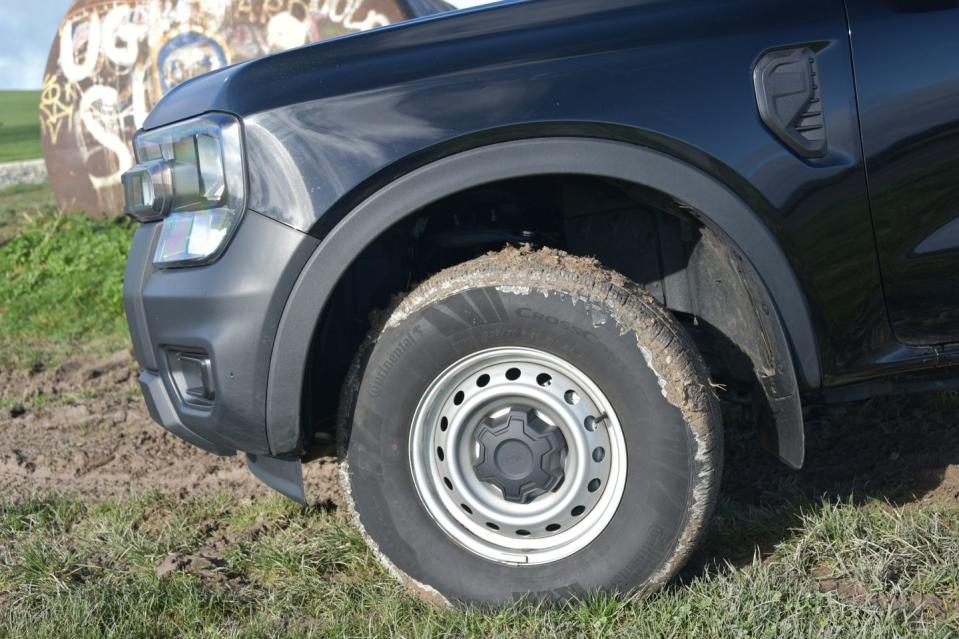
Ford had upgraded my demo truck with the Winter Pack which brings an electric windshield defroster, heated steering wheel, and manual air conditioning. Temperature control is displayed digitally on the touchscreen, but the base doesn’t have automatic temperature regulation - turning the heat dial just moves a line between blue and red. Other ticked options on the demo included the Power Pack, which brings a second battery, inverter, and an AC socket in the loadspace, the Body Protection Pack which adds a rear differential lock a fuel tank guard, and a spray-in bed protector.
Diesel power suits the basic Ranger well. In Europe, plusher versions still get the option of the old 3.0-liter V-6 turbodiesel that JLR previously used. It's the one that did duty in the last-gen Range Rover TD6. But the XL gets a much more proletarian 2.0-liter four-pot that makes a modest 168 hp and a much more impressive 298 lb-ft.
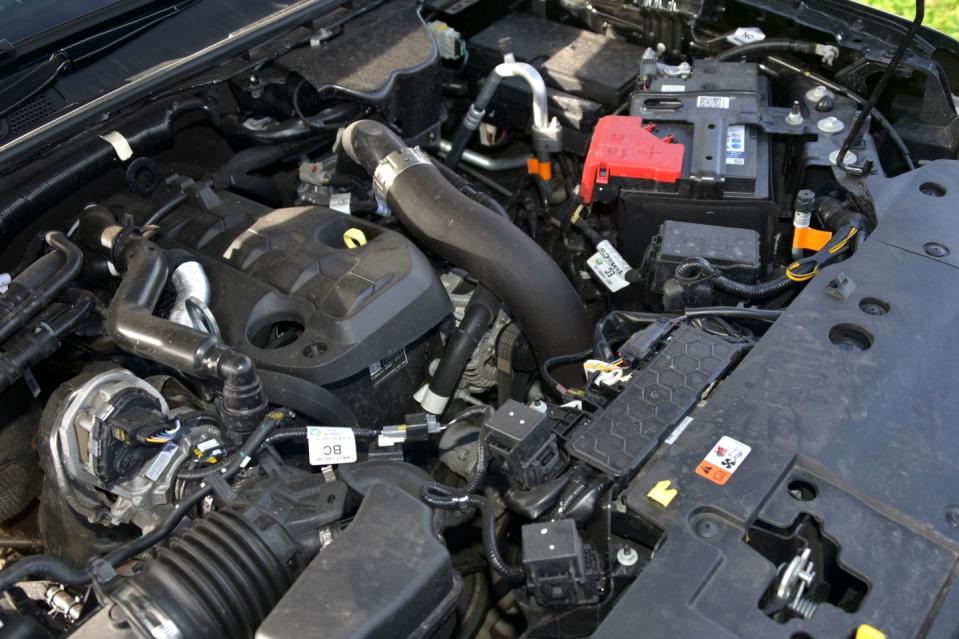
Refinement is limited. At idle the engine produces buzzing vibration through the seat base and steering wheel. Once rolling, progress is accompanied by the tinkling rattle common to cheaper diesels; imagine the sound of a liquor store during an earth tremor. Nor is there much performance to be extracted. The Ranger holds onto momentum with doughty determination, but it takes time to add it. The abundant torque makes low-down acceleration feel keen, especially with the lowness of the manual’s first gear. But the motor’s enthusiasm fades quickly as revs rise. The marked 4500 rpm redline is purely nominal given the engine starts to feel breathless at 3750 rpm. Ford doesn’t publish performance figures, and I didn’t strap on any timing gear, but I’d guestimate a 12-second 0-60mph dash unladen when fully unleashed.
That’s not how the Ranger is likely to ever be driven, and under gentle progress it feels much more composed. The gearbox is great, surprisingly so given the small percentage of global Ranger sales that will use it. Obviously the habit of creating a good manual is so engrained within Ford it is easier to make one than not. The six-speed’s shifter has a long throw, but a nice weight, and moves smoothly between easy-to-find positions. The clutch bites low and progressively, the Ranger is easy to drive smoothly.
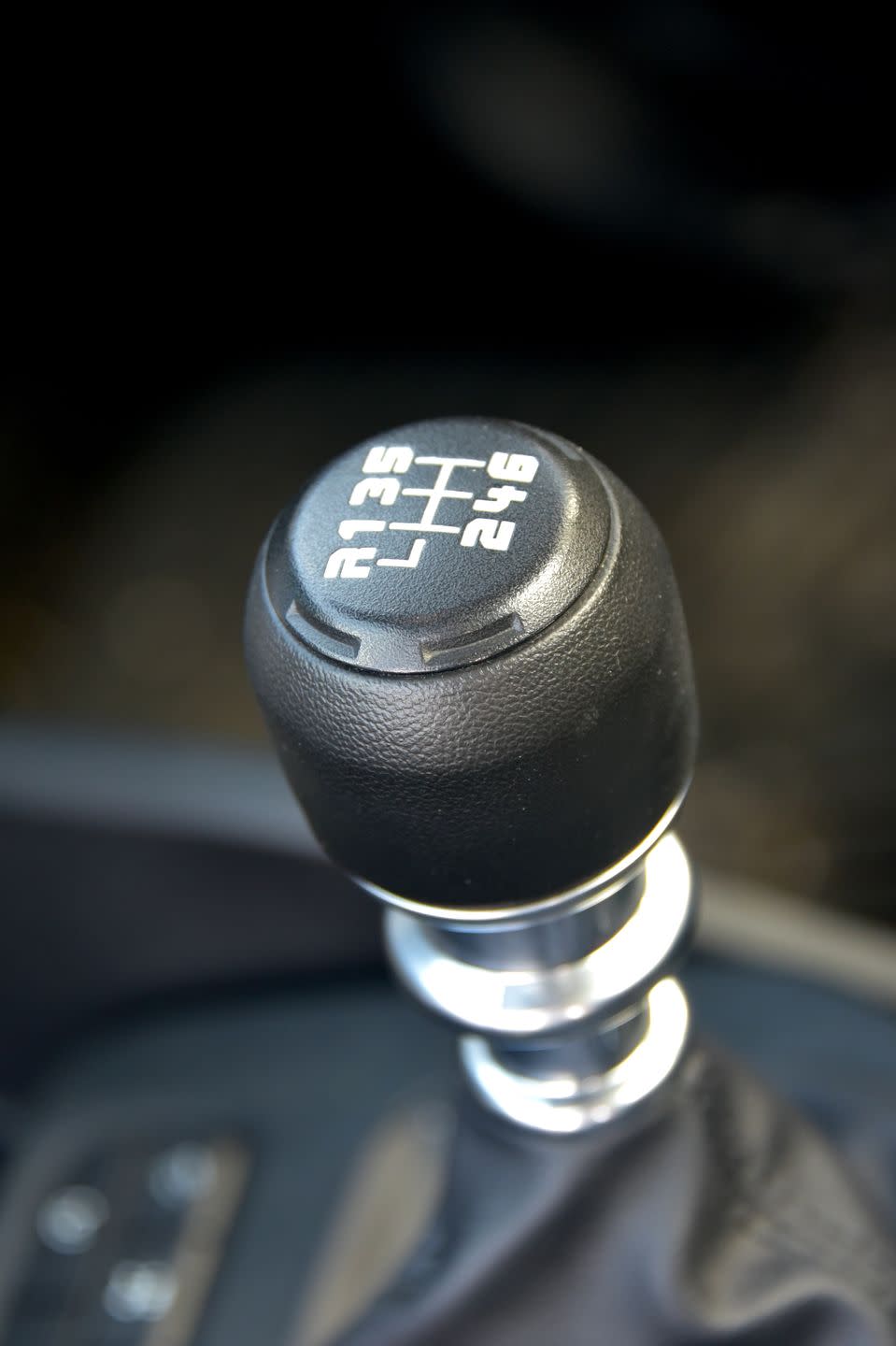
The steering impresses, too. It's accurate for any pickup and has some discernible feedback getting past the light power assistance. The solid rear axle means that mid-corner bumps often deflect the Ranger from a chosen line, but correction is easy. Ride gets lumpy when running unladen over rough roads, but beyond engine noise - which fades at cruising speeds - refinement is good.
Dynamic limits are, to no surprise, modest. Slight enough to allow the Ranger’s driver to be exploring the outer edge of available grip while doing little more than keeping up with traffic, especially on the U.K.’s many roundabouts. Our test truck rode on Continental CrossContact all-season tires, these quickly fading to understeer under lateral loads. While running in rear-drive mode it is possible to move the handling balance rearwards with more power, but definitely not to the point of wayward drama on asphalt - with too much gas or body roll the unloaded inside back wheel starts to spin. Yet on a slippery surface, the base Ranger is happy to turn into a big, lazy drift machine. And in Four Low with the rear differential locked it was able to cope with gelatinous mud and some unsealed English ‘green lanes.’
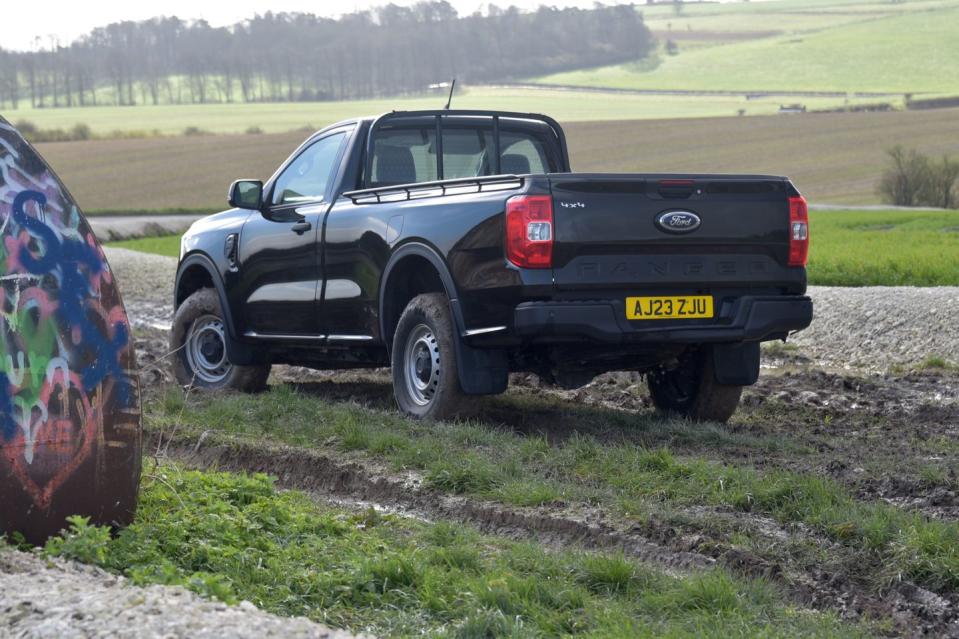
Based on cargo rather than people, the single cab is more useful than any other Ranger. The 91.8-inch bed is 30.2-inch longer than the double cab, and in Europe the single cab’s 2660 lb load capacity is 290 lb higher; its 7715 lb tow rating is also 110 lb higher (although our demo truck didn’t have a tow hitch.) The single cab gets a standard lashing rail on each side, plus the same pop-out tie-down points as U.S. spec Rangers. One obvious difference is that the useful measurement markings on the folded-down tailgate are in metric centimeters rather than inches.
Only when it comes to money does the appeal of the basic Euro Ranger fade a little; this definitely isn’t a rival to the $10,000 Toyota Hilux Champ we drove in Japan last year. Un-optioned the single cab XL starts at £28,875 without sales tax in the U.K. That might sound like less than the $32,670 starting MSRP for a Ranger in the U.S., but the UK price actually converts to $36,500 at current exchange rates. That is almost identically priced to our better-equipped Ranger XL 4x4, but it makes the British-spec single cab $3800 pricier than the Ranger XL 4x2 that sits at the bottom of the U.S. range. With options our test truck was £30,855, a smidge over $39,000.
Yet the light truck market is very different on the other side of the Atlantic, and much smaller - just 41,000 pickups were bought in the U.K. last year, of which a full 45 percent were Ford Rangers. Clearly an excellent truck is an excellent truck, wherever you are in the world.
You Might Also Like

